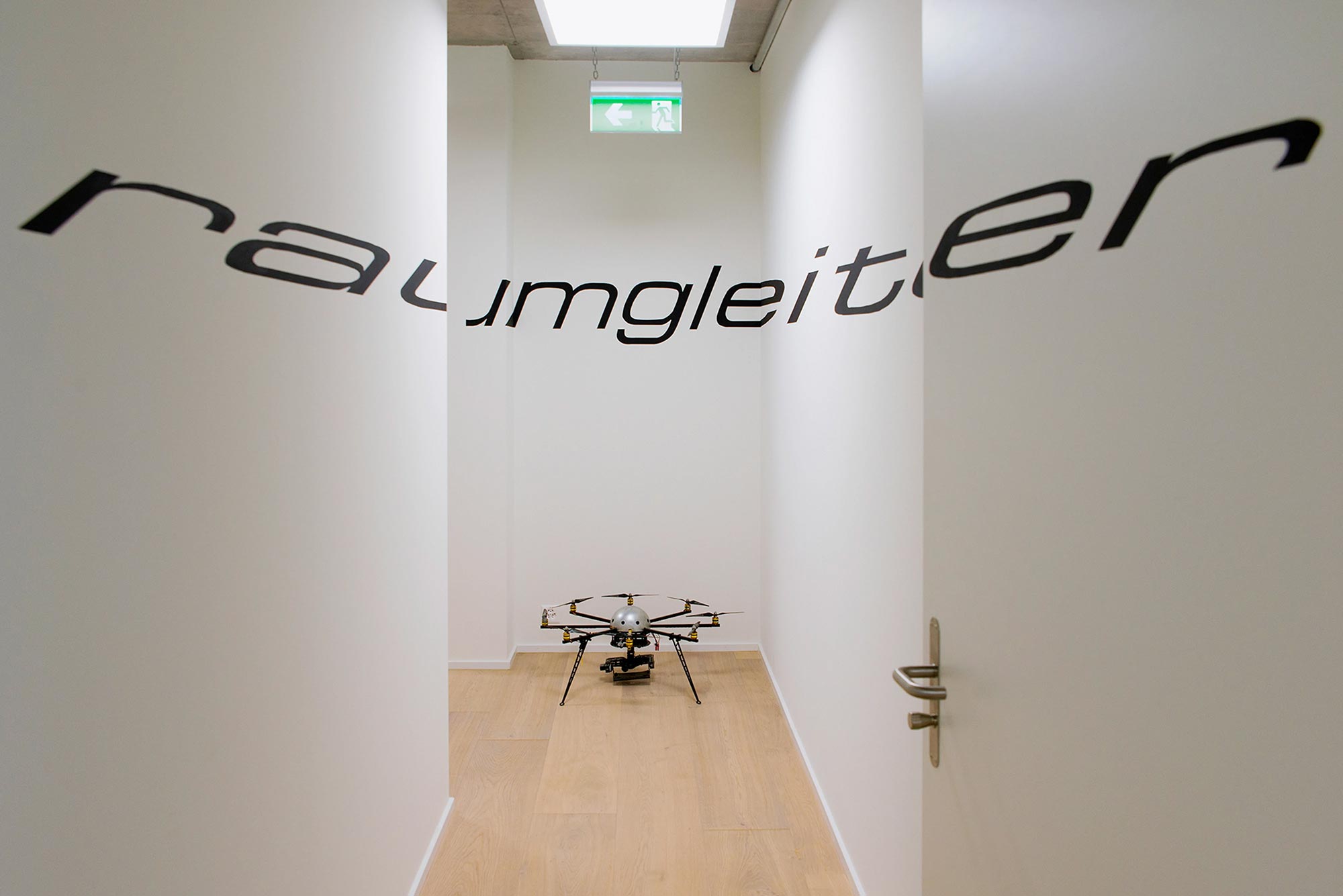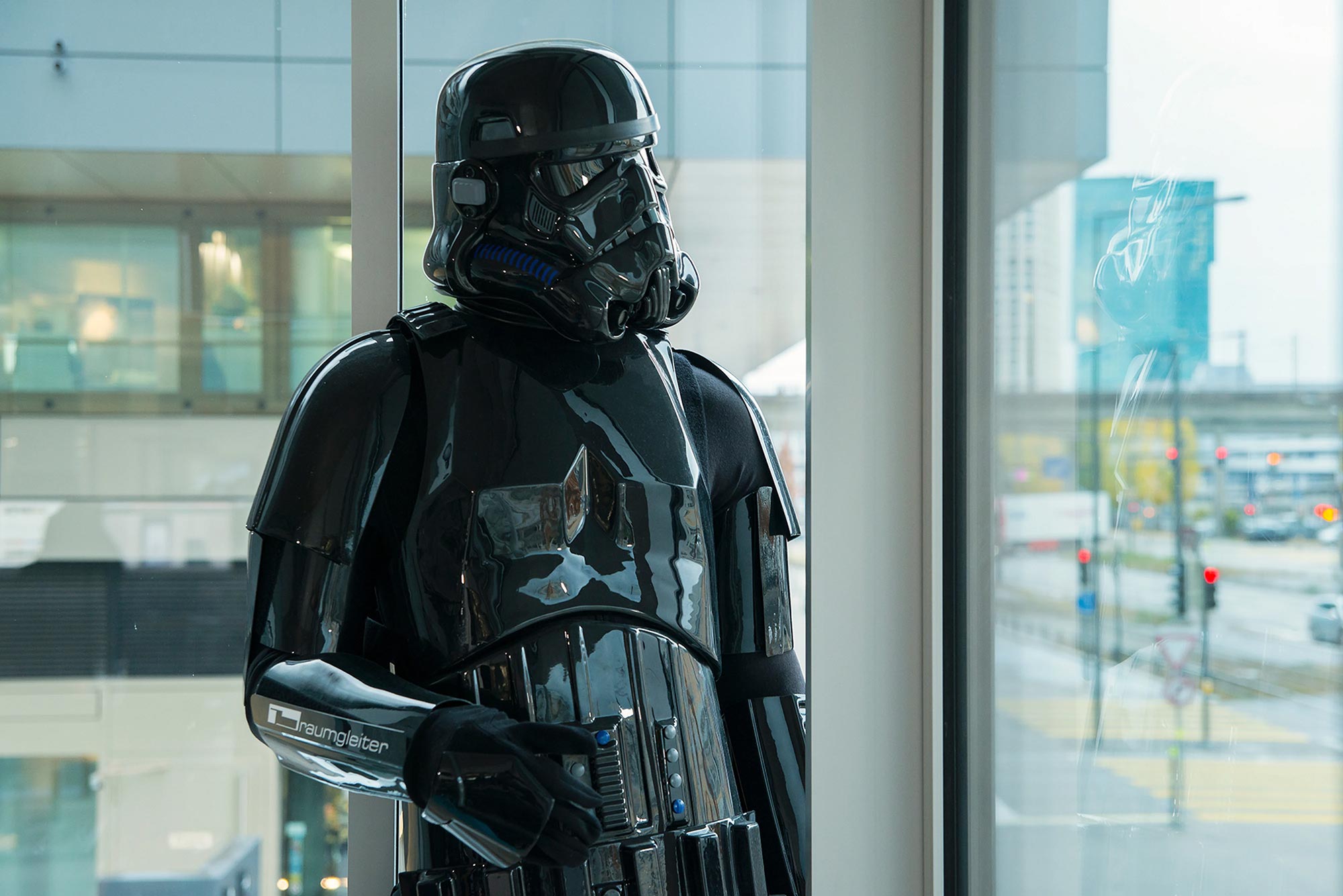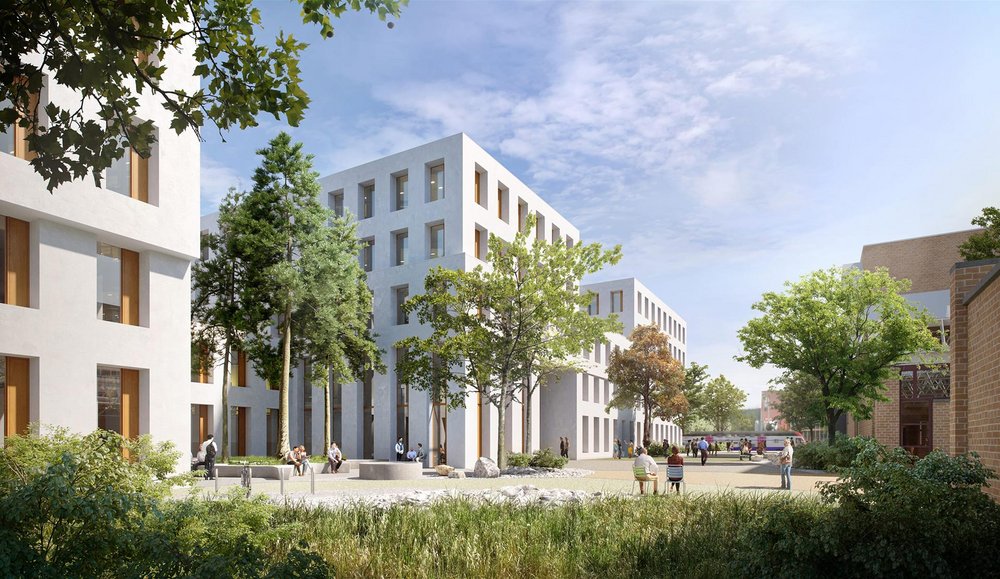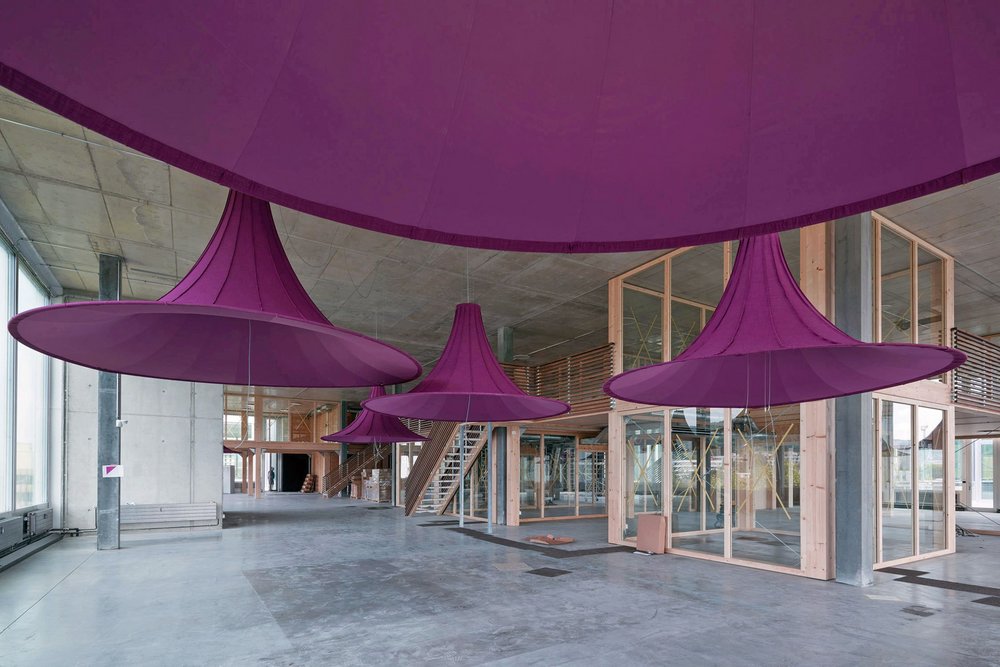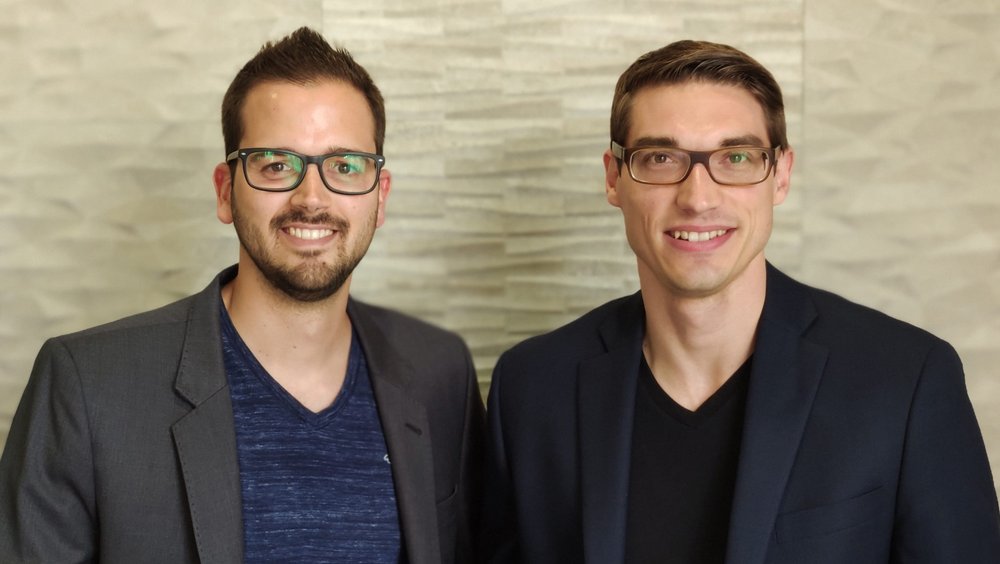Story Detail
Seeing the future while still in the present
For the last 17 years, these offices have not only constantly produced state-of-the-art building visualisation applications, they have also spared no effort, and continue to spare no effort, to ensure that today’s groundbreaking innovations are already fairly commonplace, if not downright dated, tomorrow. This is an interview we conducted with Martin Meier, who founded Raumgleiter and will soon be relinquishing his position as its managing director. We spoke of the career that has taken him from computer geek to entrepreneur, the challenges facing the industry and the bitter-sweet emotions arising from letting go and starting anew.
Mr. Meier, how did you progress from being an architect to founding Raumgleiter?
Although I studied Architecture after my baccalaureate, my design career actually started before that. In fact, one could say that my studies interrupted it to some extent. As a young man in the 1980s, I was one of the first computer aficionados. I spent my days, or should I say my nights, in the pale glimmer of the 4,096 colours generated by my Amiga monitor. Even back then, a lot of what I did was in the virtual sphere. I made friends with computer geeks from all over Europe. That may seem quite normal today, but it was very unusual back then, and a cause for concern for my parents and those close to me. I financed my studies at the ETH by selling architecture software. After graduating, I began by taking a traditional approach to entering the profession and started working for a major architect, Santiago Calatrava. Monday to Sunday, 70 hours a week.
So far, so normal.
Yes, that would still be usual for a young graduate to day, but I simply could not imagine continuing along that path. My problem was not the time I needed to invest, but the subject matter. How many years would I have to labour like that before being able to move on and join a perfectly conventional architectural practice? The prospect had no appeal to me whatever. I left my job and, after a brief spell at the ETH, set myself up in business in the field of visualisation. That was when Raumgleiter was born …
… which then went on to set a series of new standards in its industry for nearly two decades.
Visualisation has evolved very quickly since then – and here at Raumgleiter we have certainly played our part in that development. In those days, building designs were defined by outlines on a plan and physical construction models which had to be built laboriously by hand. As for computer visualisation, the best you could hope for were the first 3D graphics, most of which were of astoundingly poor quality and certainly generated no emotional identification with a project whatsoever. Coming from the world of computers, I was used to other standards. Since then, we have progressed so much further. Using their PC or an app, our clients can now view a building from whatever angle they wish. They can zoom in on it and even walk into its interior, using a smartphone or 3D glasses. Almost as if they were in a holodeck on the Starship Enterprise.
The Decision Room in Zurich West is not on a spaceship but very much on the ground. One could tentatively describe it as a meeting room. Numerous computer screens in a range of large formats are on display. The powerful computers and the rest of the high-tech infrastructure behind them remain out of sight. Everything is controlled by voice command or by touch. On the wall there is a model of the former Siemens site in Altstetten, which is now being transformed into the modern YOND cluster. By touching the screen with one finger, one can turn the model around. With two fingers one can zoom in. Time of day, time of year and solar elevation angle can all be displayed and experienced with a few simple gestures. Anyone who knows how to operate a modern smartphone can master this system in no time at all. Our conversation continues while Martin Meier fetches a headset for a virtual visit to the site.
What aspects of building visualisation fascinate you?
For me, visualisation is primarily about creating an emotional experience. 3D display makes it possible to experience and have access to people, objects and places in a way that no printed image ever could. And this can be done long before anything is actually built or transformed. For Swiss Prime Site for example, Raumgleiter visualised the YOND project, which offers a completely new type of space for companies which are growing and evolving. The YOND concept is something which is both genuinely innovative and hard to explain. Fortunately, we don’t have to explain it. Instead, we simply send people into the virtual reality of their new premises, so that everything is revealed to them – immediately and completely intuitively. And if someone does not have the time to come here, they can simply download everything as an app.
Why is Swiss Prime Site investing so much in luxury visualisation of this quality?
Their principal reason is entirely rational. To save money. Visualisation significantly accelerates the rental or sale of properties of this kind, and vacant spaces cost far more than any visualisation, no matter how expensive it is. High-quality properties deserve high-quality marketing, so that they can stand out from the crowd. The better the visualisation, the faster the marketing process. We offer high quality. That enables us to generate substantial added value for our clients. Tenants and buyers benefit from this approach, too. For them, it is much better than buying a pig in a poke, or a property based solely on its plans. It also means that the buyer or tenant can experience the property emotionally. That is an invaluable advantage when making a major decision.
Two very special artefacts are on display in the hall – very early prototypes of drones which Raumgleiter built eight years ago in collaboration with the ETH. Photographs and videos from drones were completely unprecedented back then. The models in use today are now quite simply indispensable when it comes to visualising existing properties and their surroundings. After a few flight circuits over a property, the software can create a realistic three-dimensional photographic image of the entire site. As we make our way from the Decision Room to the lounge, Meier reveals some key details of his current life. Member of the Greenpeace Supervisory Board. Founder of the Swiss Tesla Club. Investor and technology business angel in a medtech startup engaged in stem-cell research. Father, husband and Lego fan.
Your current projects are impressive. Despite this, you still seem to be a little more interested in tomorrow than in today.
Of course, as an entrepreneur, I always have to include today in any decisions I make. But, yes, I am certainly very interested in the future. I am always trying to take the next step and to figure out the implications of the one after that. At the moment, for example, my principal interests are alternative sources of energy and environmental matters.
After 17 years, you decided to let go of Raumgleiter and start something completely new. Was that a difficult step to take?
Yes, at first I found it difficult. It was hard to say goodbye to the company and the people who work there. But this new freedom also has its positive sides. Ultimately, it is a great opportunity – both for Raumgleiter and for me. With Halter as its new owner, and with its new management team, the firm is certainly in very good hands. And I can actually practise letting go now. Instead of waiting until I am 65 or when my daughter is grown up. I now have both my hands free, not to mention my mind, so that I can invest my energy in something new.
What will that be?
At this stage, I do not yet know. I am very interested in everything which is involved, and will be involved, in BIM, Building Innovation Modelling. Right now I am going to take a few weeks holiday and then I will see what I do. Of course, things may turn out quite differently. A few weeks ago, I set up my own website – www.meier.vision – for the time after Raumgleiter. I think the website name suits me quite well. Even though I haven’t handed out any business cards, I am already getting some quite exciting initial enquiries by e-mail.
How do you see the future of the industry in which you have worked so far?
The construction industry will become digitalised and, as I said earlier, BIM will have an important role to play in the next few decades. With virtual reality, augmented reality and artificial intelligence, things are certainly not going to be boring. Principally because the expectations of end clients are increasing enormously. They are no longer willing to accept anything that does not meet the standards of their current smartphone.
Thank you for taking the time to talk to us. We wish you every success with your next endeavours!
As we leave, Martin Meier’s next visitor is already waiting – we have exceeded our allotted time. Hardly surprising, given the exciting insights afforded us by this flight into the most modern spheres of technology, in the company of a fascinating man whose unique skills have enabled him to combine computer technology and virtual cinema to create a host of viable state-of-the-art applications.


